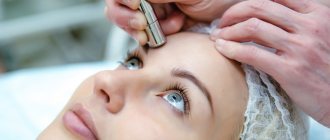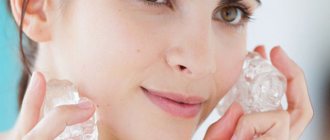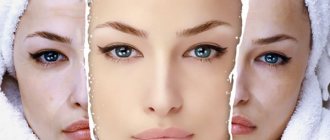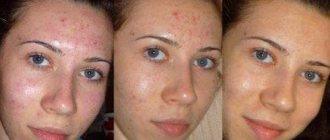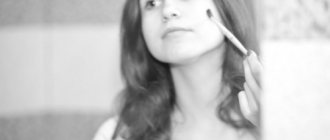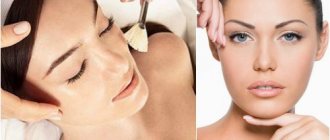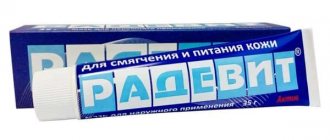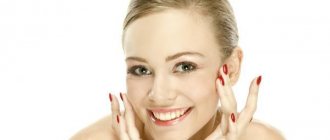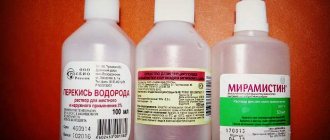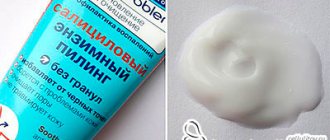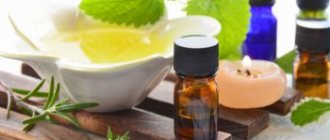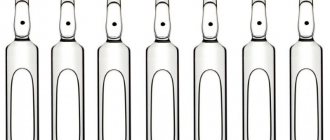You will undoubtedly be pleasantly surprised when you find out how beneficial milk peeling is for your facial skin. In cosmetology, it is one of the most effective drugs for combating skin imperfections.
And that's why:
- Lactic acid is an integral part of the skin's constituent components (natural moisturizing factor - NMF);
- Moisturizes, brightens, soothes the skin, reduces inflammatory manifestations, and also has an exfoliating effect;
- Refers to “summer” acids, that is, milk peeling can be used all year round;
Milk peeling is a targeted action on the skin with the aim of rejuvenating, moisturizing and superficially cleansing the skin, combating superficial wrinkles.
Indications for the procedure
Indications for sessions are:
- skin dehydration;
- seborrhea;
- hyperkeratosis;
- enlarged pores;
- dull complexion;
- shallow expression wrinkles;
- photoaging;
- acne;
- post-acne;
- stretch marks;
- hyperpigmentation;
- sagging skin;
- freckles;
- excessive secretion of sebum;
- skin hypersensitivity and allergies to other types of peeling.
The procedure is indicated for minor age-related skin changes and severe dehydration. It is impossible to defeat deep wrinkles, deep scars or scars with its help.
Step by step cleaning process
- The face is washed with liquid soap, then blotted with a soft quality towel and dried for another 15 minutes.
- A small amount of milky substance is applied to a cotton swab or cosmetic pad from the kit. Then it is distributed over the facial skin in an even layer. If desired, this procedure is repeated again, without affecting the skin of the lips, nostrils and around the eyes.
- The substance is kept on the face for one minute. Gradually, this time can be extended to five minutes, and in the case of low concentration, not exceeding 10 percent, to 10 minutes. But more, even with any saturation, is impossible.
- Next, the face is treated with a weak alkaline solution (mineral water, tonic or other cosmetic product with a high pH). Then it is rinsed with water at a pleasant temperature, performing milk peeling for at least 30 seconds.
- Exfoliated and washed skin is covered with moisturizing cream (in summer - sunscreen). This procedure is indicated even in inappropriate weather, when it is cool and cloudy. After all, skin treated with lactic acid will become susceptible to ultraviolet rays, and therefore you can get sunburn.
Most popular: Peeling for the bride PQ AGE - results after the first use
Contraindications
Milk peeling is contraindicated if there are one or more restrictions from the list:
- exacerbation of herpes;
- taking antibiotics;
- rosacea;
- diabetes;
- pregnancy;
- lactation period;
- period of skin recovery after hair removal;
- oncology;
- high body temperature;
- open wounds and violation of the integrity of the skin;
- fresh tan;
- skin inflammation;
- infectious diseases;
- individual intolerance;
- cardiovascular diseases in the acute phase.
Benefits and indications
— Tissue regeneration due to effects on the cell.
— Increases the elasticity and firmness of the skin.
- Short recovery period after the procedure, or none at all.
— Improves blood circulation, eliminates flaking and dryness.
— Activates the synthesis of ceramides, increasing the protective function of the lipid barrier.
— Pronounced whitening and moisturizing effect.
— These types of peelings are suitable for dark, thin and sensitive skin, even for skin prone to allergic reactions.
— Eliminates acne, freckles, pigmentation, sallow complexion, blackheads, enlarged pores, seborrhea.
— Improves the functioning of the sebaceous glands.
— Has a bactericidal effect, relieves inflammation and irritation.
— Eliminates not very deep stretch marks and wrinkles on the face and body.
Advantages of milk peeling
Thanks to the gentle and gentle effects of lactic acid, this procedure is not accompanied by pain or discomfort. It does not cause allergic reactions and has no serious consequences. The skin exfoliates in a thin layer and does not form redness. You won't have to miss public events.
Can be used as preparation for more serious procedures. It does not require special care before or after sessions. For prolonged action, it is enough to purchase and periodically use special products containing lactic acid. As basic care, you should use any moisturizer and sunscreen with SPF of at least 30. The procedure can be carried out all year round, since it is not accompanied by a photosensitizing effect.
Milk peeling is ideal for all skin types. It normalizes the secretion of the sebaceous glands, does not dry out, but rather moisturizes the skin cells. Already after the first procedures, you can notice a visible result: the skin looks fresher and more velvety, the complexion has become more even.
Due to the absence of abrasive particles, milk peeling can be used on any area of the skin. It is great for those with dark skin.
Advantages and disadvantages
Lactic acid is an excellent product that helps make your skin look flawless and get rid of many problems. But still, peeling based on lactic acid will not get rid of all possible changes in the skin of the face, although it will help prevent and slow down their occurrence.
Cosmetologists include the following advantages of lactic acid-based peeling:
- intensively moisturizes the skin;
- easily removes dead skin cells;
- smoothes superficial wrinkles;
- skin tone improves significantly;
- fights pigment spots;
- the relief of the skin is evened out;
- the rehabilitation period after peeling is minimal;
- can be carried out all year round;
- versatility of peeling for skin types;
- pronounced comedolytic and bacteriostatic effect.
But milk peeling also has disadvantages:
- although rare, an allergic rash to the components of the drug does occur;
- deep wrinkles cannot be corrected.
As you can see, the disadvantages are minor. We can say that there are none at all: allergies can happen to everything, and to combat serious age-related changes, there are medium and deep peels.
By the way, you can find out what type of aging your skin will change in order to choose the right care!
Pre-peeling preparation
Milk peeling is one of the few types of cosmetic sessions for which there is no need for special pre-peeling preparation. It is enough to start using sunscreen a couple of weeks before the session and avoid excessive sun exposure. In addition, you cannot scrub your face or perform cosmetic procedures that damage the skin.
If you are prone to herpes, it is recommended to take a course of antiviral drugs as prescribed by your doctor. 2 weeks before the procedure, you need to apply a cream containing low concentration of fruit acids at night.
Possible side effects
After the milk peeling procedure, the following consequences may appear:
- Slight exfoliation of the skin in the first 2-4 days after the procedure.
- Minor redness that goes away without intervention within two days.
- A feeling of burning and warmth during the procedure, which goes away already at the stage of neutralization and moisturizing.
- Patients with thin, sensitive skin may experience increased sensitivity. Shea butter and Panthenol will ease the condition.
- Burns due to violation of peeling technique or lack of awareness about the drug from this company. Testing the skin's reaction to acid is recommended. Panthenol and Olazol are used for treatment.
Peeling
Milk peeling occurs in several main stages:
- make-up removal and cleansing;
- toning and degreasing the skin using a tonic containing lactic or fruit acid;
- application of 1-2 layers of the main preparation containing lactic acid in a percentage concentration from 30% to 90%, the exposure time depends on the type, color and sensitivity of the skin, the number of sessions performed (it can range from 1 to 20 minutes);
- applying the neutralizer for 1 minute;
- washing with cold water;
- skin hydration;
- applying a soothing mask and nourishing cream.
The concentration of the product is selected depending on the degree of problems and pH of the skin. Important importance is given to the sequence of application of the active composition: forehead, temporal part, cheeks and cheekbones, neck, décolleté, chin, area around the mouth, nose and nasolabial fold. The neutralizer is applied in reverse order: from the most sensitive areas to areas with low sensitivity.
Features of the rehabilitation period
After the milk peeling procedure, you must adhere to some recommendations:
- Do not touch or scratch the areas of skin treated with peeling.
- Do not use decorative cosmetics for up to 24 hours.
- Do not use aggressive detergents for up to 24 hours.
- Do not epilate areas where acid has been used.
- Avoid direct sun contact with vulnerable skin.
To achieve maximum effect, you need to undergo 4-8 procedures with an interval of 10-14 days. The frequency depends on the skin type and individual characteristics of the patient. The result lasts for a year after a full range of procedures and periodic consolidation of the effect with home remedies with lactic acid.
Post-peel care basics
No special care is required after milk peeling. It is enough to apply moisturizer for a week. To speed up skin healing and enhance the effect, it is recommended to use products containing lactic acid. When going outside, do not forget to use a protective cream with SPF 30.
Immediately after the procedure, do not touch or scratch the skin. For 24 hours, the use of decorative cosmetics, aggressive care products, exposure to direct sunlight and hair removal are prohibited.
Properties of lactic acid
How lactic acid works when in contact with the skin can be judged by its basic properties:
- Keratolytic (renewing) effect. As a result, exfoliation (peeling) of keratinized cells occurs. The cells of the basal layer multiply and the skin is renewed.
- Powerful hydration (moisturizing) effect. Lactic acid is a component of NMF (Natural Moisturizing Factor), a substance in the stratum corneum of the skin that has the ability to attract moisture. When the epidermis is renewed, keratinized cells are replaced by living keratinocytes formed in the basal layer, which ensures skin hydration.
- Lifting effect. Achieved by dividing and stimulating the activity of cells of the papillary dermis layer. These leading cells produce components of the intercellular substance responsible for the synthesis of glycosaminoglycan molecules, which play the role of a lubricant. By enhancing the hydration and visco-elastic properties of the dermis, lactic acid improves skin tightness, evens out the texture and smoothes out wrinkles.
- Normalization of sebum production. As a result, increased dryness and oiliness are eliminated, which leads to a decrease in inflammation of acne with comedones and narrowing of pores.
- Whitening effect. Milk peeling whitens the skin by exfoliating dead cells. In addition, lactic acid helps to distribute melanin evenly in the epidermis. The result is smoothing and brightening of skin color.
- Bacteriostatic and anti-inflammatory properties. They consist in the “acidifying” effect of lactic acid.
- Antioxidant action. It consists of reducing the production of free radicals and protecting the skin from aggressive environments.
Milk peeling at home
At home, you must first conduct an allergy test to determine the skin reaction. Before using the drug, you should carefully read the instructions and do not forget about the sequence of application of the active composition. It is important to avoid the area around the eyes and lips. During the first session, the exposure time should be no more than 1-2 minutes. If the skin reaction is normal, the peeling time is increased, but in no case should it be kept longer than indicated in the instructions.
How does acid affect the skin?
In order to understand the reasons for the rejuvenating effect of milk peeling, it is necessary to clarify some aspects of the physiology and anatomy of the skin. The structure of the skin is divided into 3 sections:
- epidermis (topmost layer);
- dermis (actual skin);
- hypodermis (subcutaneous fat tissue).
In this case, the epidermis consists of 5 layers of cells: basal, spinous, granular, shiny, horny.
Aging skin undergoes a number of changes that occur primarily in the dermis and epidermis. Over time, the layers of the skin become thinner and droop, and in addition, solar radiation has a strong negative effect on aging skin. This damage leads to various problems:
- thickening of deformed skin folds;
- solar elastosis;
- uneven pigmentation.
Carcinogenic effects lead to actinic keratoses, basal and squamous cell carcinomas and, to a lesser extent, melanomas.
Scars accumulated over a lifetime from injuries or acne lead to additional changes in skin texture. True age-related skin laxity in the form of drooping eyebrows, bags on the eyelids, jowls and loss of cleavage, lengthening of the earlobe, drooping of the tip of the nose, thinning of the upper lip and other manifestations are now treated surgically through facial rejuvenation procedures (eg, facelift, facelift eyebrows, rhinoplasty, lip augmentation). Conversely, these treatments do not help with textural damage to the skin. Fine wrinkles, large pigmentation irregularities and aging skin are treated with peeling using chemical or mechanical means.
What is this in cosmetology?
Milk peeling is a gentle cosmetic procedure performed to exfoliate the stratum corneum and cleanse the skin. The technique does not injure the epithelium, therefore it is used in people with highly sensitive skin. This is a type of chemical peeling that gives a superficial effect.
When aggressive agents with a high concentration of the active substance and a low pH level are used during the procedure, the therapeutic effect reaches the deep layers of the dermis. In this case, a medium peeling is obtained.
In most cases, the procedure is performed on young people under 25 years of age . It is possible to use milk peeling after 35 years as part of a complex treatment of dermatological problems. The technology allows you to well moisturize the skin of the face, normalizes the water-electrolyte balance in the dermis and stabilizes the microcirculation process.
Component characteristics and properties
The procedure is carried out using lactic acid, which is formed during the breakdown of glucose. This is a natural product that does not cause severe irritation or damage to epithelial cells. The organic compound is involved in carbohydrate metabolism and is one of the main factors in natural skin hydration. An alternative name for the active substance is lactanoic acid.
The natural ingredient can be found in sour milk, fermented alcohol or sauerkraut. For the manufacture of cosmetics, the active ingredient is obtained through an enzymatic reaction.
During industrial production, glucose is fermented with the participation of lactic acid bacteria. The molecules of the resulting lactic acid are small in size, due to which they easily pass through the membrane of epithelial cells and have a uniform effect on the skin of the face.
After penetration into the superficial and deep layers of the dermis, the active substance produces the following effect:
- provokes cellular tissue renewal;
- increases the speed of microcirculation;
- participates in the production of glycosaminoglycans;
- improves the lipid barrier, which performs a protective function, stimulates the formation of ceramides;
- increases skin hydration;
- accelerates the synthesis of collagen and elastin fibers.
We recommend: All about peeling with fruit acids. Who is it indicated for, are there any restrictions, how is it carried out, can it be done at home?
Indications and contraindications for use
There are the following indications for milk peeling:
- dehydration of the skin, disruption of water-salt metabolism in the cells of the epidermis, which manifests itself in the form of dryness and flaking;
- development of mild acne;
- hyperkeratosis, in which there is an increase in the stratum corneum of the skin, the appearance of irregularities;
- pore expansion;
- dullness of the skin;
- the appearance of stretch marks or stretch marks;
- small expression wrinkles;
- development of premature age-related changes due to excessive exposure to ultraviolet radiation;
- disruption of the sebaceous glands;
- hyperpigmentation;
- increased skin sensitivity, high risk of developing an allergic reaction;
- low skin tone, the appearance of sagging areas in the cheeks and chin.
Milk peeling can be used during the preparatory stage before a complex cosmetic procedure involving deep professional cleansing of the skin. Lactanoic acid is used as an additional therapy in anti-aging techniques.
The procedure is not performed in the following pathological conditions:
- acute inflammation of the skin;
- individual intolerance to structural components;
- violation of the integrity of the epidermis;
- exacerbation of herpes;
- less than a week has passed since hair removal;
- tanning by artificial and natural means;
- taking antibacterial medications and retinoids that increase the photosensitivity of the epidermis;
- dermatological diseases: acne breakouts, eczema, psoriasis;
- the presence of malignant neoplasms;
- diabetes;
- rosacea;
- infectious and inflammatory diseases of a systemic nature;
- telangiectasia.
Lactanic acid is not recommended for use by pregnant and lactating women.
How to make at home
There are several types of mild chemical peels that can be done at home.
Classical
It does not require extra costs or much effort; the ingredients for it can be found in the refrigerator of any housewife.
They can be kumiss, kefir, cottage cheese, yogurt, sour cream .
The products should be applied with a brush to the face in the form of a mask for a short time (about 15-20 minutes), then washed with warm water.
Due to the softness of this method, it can be used often and completely painlessly for the family budget.
Salicylic
Mix the same yogurt or sour cream with three Aspirin tablets.
Leave the mixture on your face for about 15-20 minutes, then wash it off with warm water.
It is better to use this solution no more than once a week .
Glycolic
This option is good because lactic acid can be safely mixed with other types of acids.
For example, with glycolic (you will learn about such facial cleansing in a separate article).
This mixture is also applied to the face, left to act for 15-20 minutes, washed off with water, and moisturized the skin. This cleaning should be done once every 7-10 days .
Other types
Lactic acid can be mixed with fruit acid . For a homemade version, you can take yogurt and add apple juice to it.
You can try mixing lactic acid with retinoic acid , but remember that the second ingredient has a stronger exfoliating effect, so its concentration should not exceed more than 3%.
Another type of milk-glycol peeling was developed by the American doctor Jessner . The product has a gentle effect and can be used at home.
It not only cleanses the epidermis, but also activates the regeneration of its cells. You will learn more about Jessner peeling here in the text.
You need to do it like this - remove makeup, cleanse your face, apply degreaser, rinse it off, start applying the product from Jessner, starting the distribution from the forehead and ending with the chin.
After 20 minutes, wash your face with warm water. The general recommendation for frequency is that cleaning with lactic acid should not be carried out more than once every 7-10 days .
We offer 5 of the most popular and effective peelings, which any good cosmetology specialist will recommend to you:
- Gas-liquid - mechanism of action, advantages.
- Carbon - features of cleansing and rejuvenation.
- Enzyme - rules, types.
- Laser - what is it, what are the results?
- Chemical - types of procedure, what problems does it solve?
Benefit and action
Lactic acid is related to our skin and is therefore considered safe for it.
It can bring many benefits - maintain the correct pH balance, increase the immunity of the epidermis, and promote its hydration.
The advantage of milk cleansing is safety and at the same time effectiveness .
This cleansing will give a decent exfoliating effect, moisturizing, rejuvenation, evening out the overall tone of the face, whitening the epidermis, and a slight mattifying effect due to gentle but effective cleansing.
This procedure has an antimicrobial and protective effect . Another advantage of peeling is its softness.
This procedure does not require large expenses, a long recovery period and special care after cleansing. This is explained by the fact that the concentration of lactic acid in home remedies or products presented on store shelves is very low.
This makes the home cleansing procedure more gentle and safe, although the results from such products will not be visible immediately after cleansing .
The skin will respond slowly and gently to the same gentle procedure. For a more active, obvious effect, it is better to contact cosmetologists ; only they will be able to carry out the cleansing procedure correctly and without consequences.
This is what the face looks like in the photo before and after the procedure:
